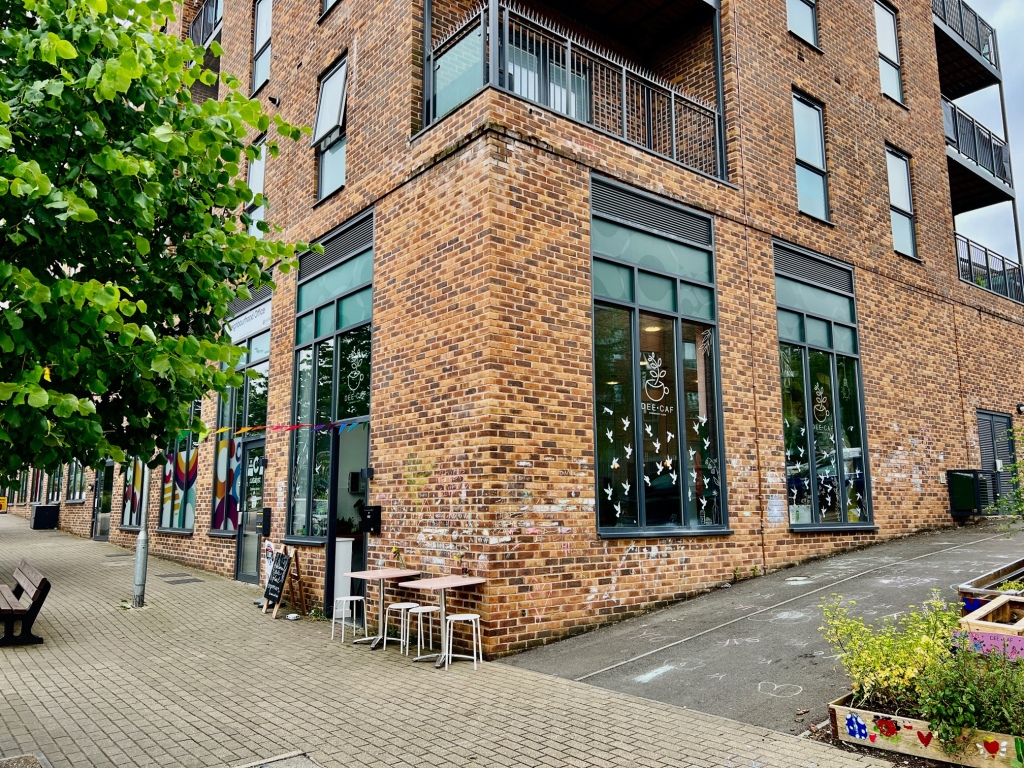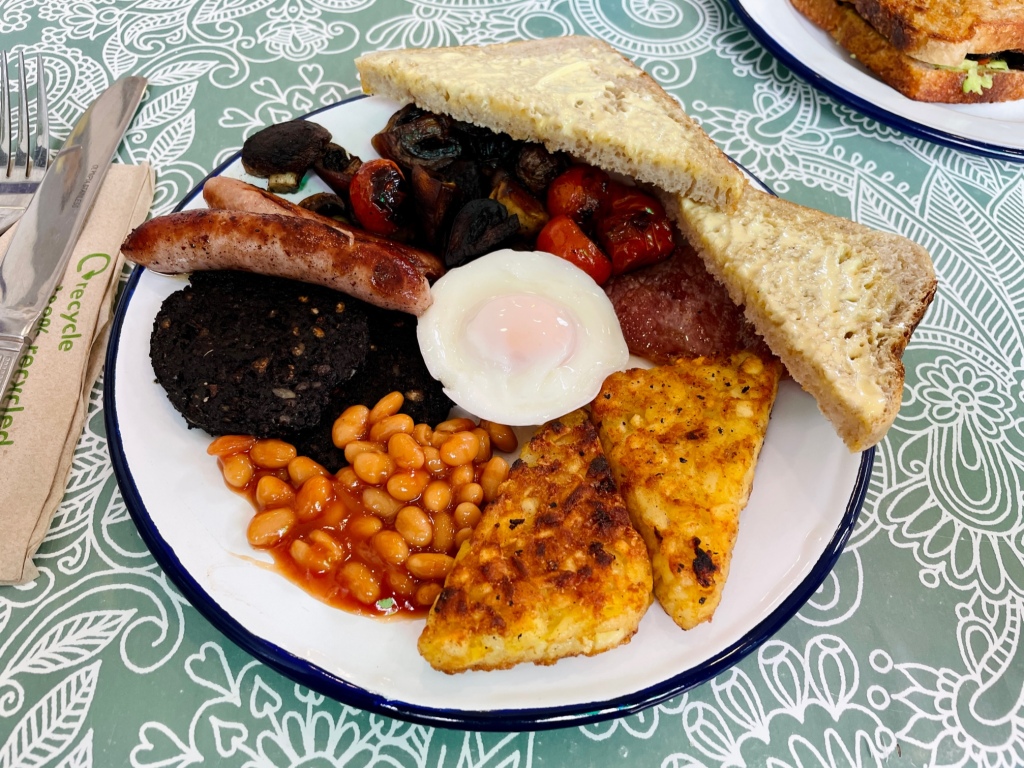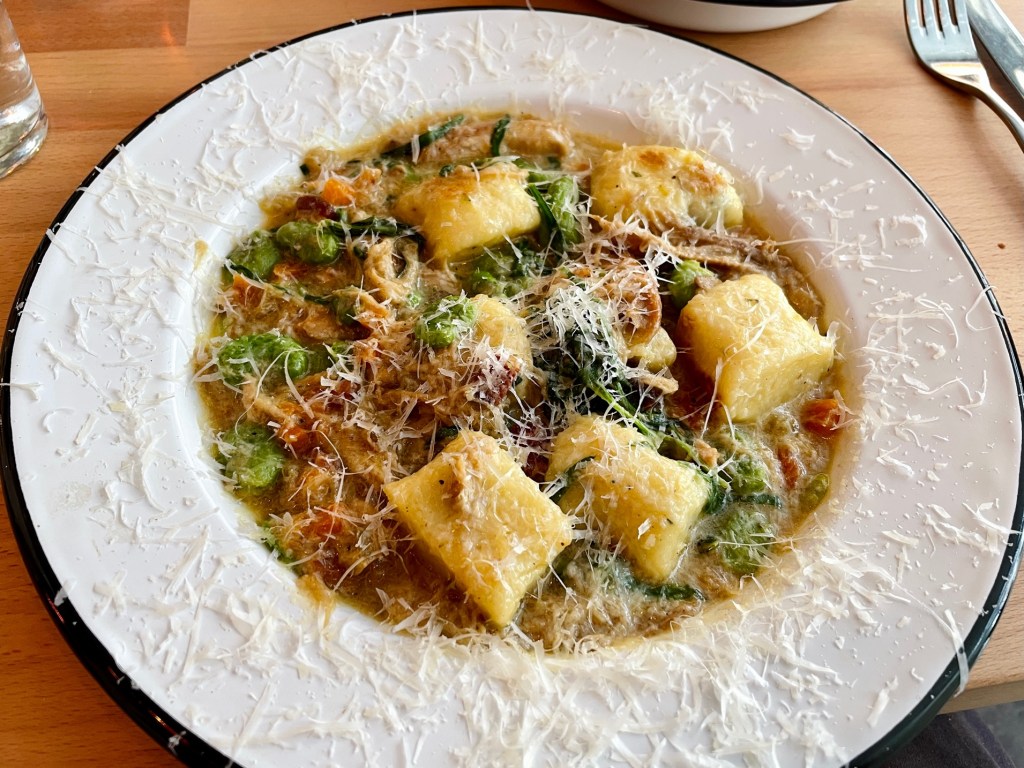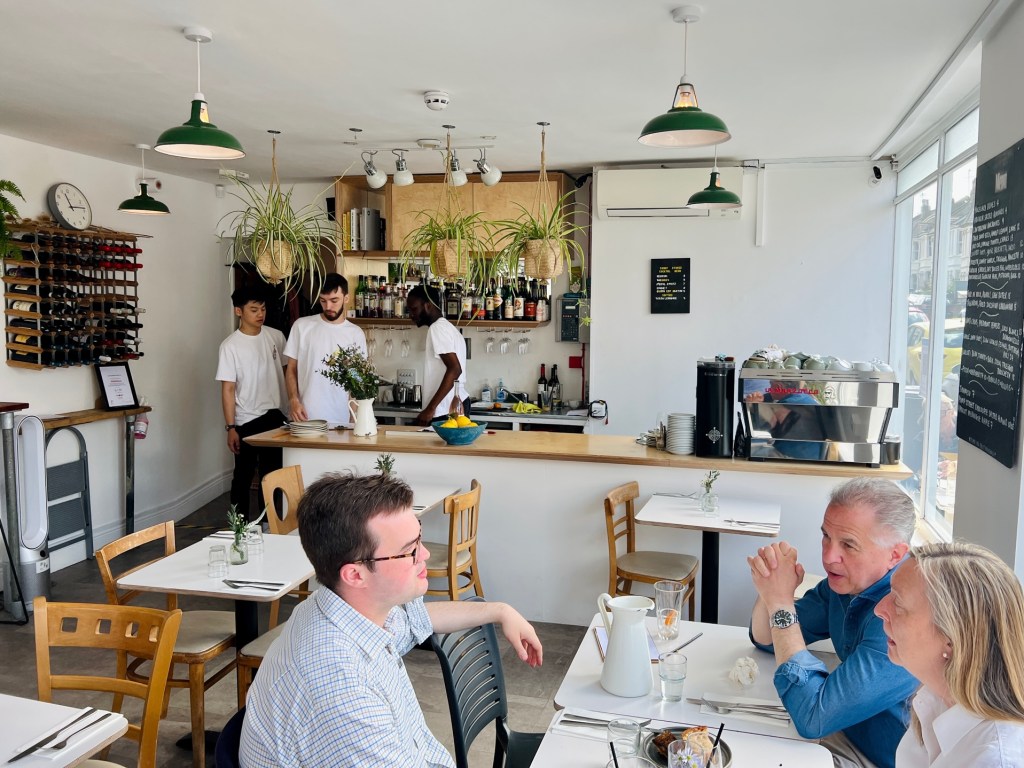It’s weird, you know. I’ve been writing this blog for the best part of nine years, during which time I’ve reviewed restaurants, cafés and pubs in all manner of places. I’ve gone as far west as Bristol, as far east as London. I’ve covered Windsor and Henley, Bracknell and Wokingham, I’ve even written dispatches from further afield – from France, Spain and Belgium. So why is it, in nearly nine years, that I’ve never reviewed a single venue in Tilehurst?
Your guess is as good as mine, but I think lack of opportunity plays a big part. West Reading is a true crucible of culinary creativity, as evidenced by the likes of Chef Stevie’s Caribbean Kitchen, Momo2Go, Buon Appetito, Oishi, Kobeda Palace. And every time I trundle down the Oxford Road on the number 17 – usually for a few pints at Double-Barrelled – I see a new restaurant I’ve never heard of: I’m forever making notes of places that might feature on my to-do list.
But somewhere west of Kensington Park, or Grovelands Road, something odd happens and you enter some kind of black spot: not of mobile reception, but of restaurants. Where are they all? Because I think in all my time writing reviews only a handful of Tilehurst establishments have even appeared on my radar. Two are Indian restaurants: one is Zyka, which won an award, but I had takeaway from there and wasn’t enormously impressed. The second is Himalayan Hotspot, which I should check out at some point (I think it’s been there forever, which is possibly the reason why I haven’t).
Then you have Tilehurst’s two cafés of note. One, The Switch, is a place which opened last September on Tilehurst Triangle. It’s co-owned by the owner of Zyka, and it looks, on paper at least, like an attempt to recreate the success of Café Yolk across town with a relatively similar menu. It’s all herbed potatoes and smashed avo and no doubt I will make my way there at some point, hopefully in less than another nine years. Maybe smashed avo will be out of fashion by then, you never know.
But my choice of venue this week is the superbly named Dee Caf, an altogether more curious beast with a very different story. It’s on Spey Road, in the heart of the Dee Park Estate, in a site which used to play host to Workhouse Coffee’s short-lived Tilehurst outpost. In September 2020, at about the worst possible time to open a hospitality business, Dee Caf opened in that space under the aegis of Tina Farrow. Farrow’s background is in education, both in the prison and food sectors, but she said she’s always loved food and wanted to create business of her own.
Dee Caf is run as a CIC, with clear links to the community it serves, and that’s obvious both from a visit to their website and to the café, in a myriad of ways. The café has a community fridge every week for people in need, runs a food bank and has equipment for litter picking (pickers are rewarded with a hot drink for their efforts). It also provides free sanitary products, runs community events for locals and has a refill station in the corner. There’s even an event for dads on Saturday mornings where they can turn up, meet other dads and enjoy a bacon sandwich and a coffee for a fiver.
On paper, at least, it looked more Fidget & Bob than Café Yolk. But all those laudable intentions didn’t necessarily mean the food was great, so on a Saturday lunchtime I headed over with Zoë – pre-Double Barrelled – to give the place a try. It was a short, slightly meandering walk from the 17 bus stop opposite the Pond House pub, and when you reach Dee Caf it does have the feel of an oasis about it, all tasteful big windows and cheery bunting. You could think you were in Copenhagen, or Rotterdam, on a sidestreet far from home; having never been to Tilehurst, I suppose technically I was.

Inside it was plain, unassuming but agreeably homely, flooded with light from those almost full-length windows. And again, you got that sense of community from everything – art on the walls, shelves selling plants, Tilehurst Honey (the beekeeper also lives locally) and some very cool-looking postcards of the Dee Park Estate, taken by a local photographer. The menu, on an almost floor to ceiling board, also listed all of the community initiatives underneath in brightly coloured, friendly-looking script.
It was a good and attractively priced menu, very much centred around brunch and lunch. Sandwiches tended to cost around four pounds and many of them looked far more interesting than standard issue: the “samostie”, for instance, a toastie with veggie samosa mix and yoghurt chilli chutney, or a halloumi sandwich with a lime, garlic and chipotle mojo. And it was hard not to love anywhere that offers a fish finger bap elevated by the addition of salt and vinegar crisps. Breakfasts looked more conventional, but had everything you could possibly want and, at seven pounds fifty, looked like cracking value.

There were also pastries, but I got the impression Dee Caf had had a busy Saturday morning – all those dads descending on it, perhaps – because they’d almost run out when I got there. But they too are bought locally, along with the bread and, on Fridays, eclairs from Davy at Wolseley Street (which, having tried them at Geo Café, I can confirm are bloody lovely). Dee Caf also uses a local butcher for all of its sausages, bacon and what have you; eggs, as so often with Reading indies, are from Beechwood Farm.
All the ingredients were in place for a terrific meal so naturally I had that feeling of trepidation while we waited for our order to turn up. There were two members of staff working in the open kitchen behind the counter and both were unfailingly lovely from start to finish. So we got to watch them cooking our orders, too, although I felt a little intrusive gawping as they danced around one another fetching things from the fridge, slicing black pudding, making our lunch. It also meant that I saw the flames coming off the frying pan at a key moment and one of the staff rushing over to shake the pan and turn the heat down (“I think I’ve just flambéed your mushrooms” she called over, brightly apologetic).
First to turn up was our coffee, in enamel mugs, and that gives me a chance to get the worst of it out of the way first. My latte had that burnt acrid taste I associate with Reading’s less impressive cafés and I thought that was a real shame. Don’t get me wrong, I still had a second cup because I wanted to linger longer, but it needed more sugar than I’d usually put in to try and knock off the sharp edges. I think Dee Caf uses Kingdom Coffee, as do Café Yolk these days, and either the coffee’s not great or it’s not being made as well as it could be. Given the disappointing coffee I had from Yolk after they stopped buying from Anonymous, I think it may well be the former.
Salvation arrived, though, in the shape of quite one of the nicest breakfasts I’ve had in a long time. Dee Caf’s full English really was an embarrassment of riches, and I’m delighted to say I enjoyed practically all of it. The black pudding, cooked until it had ventured from crumbly to crispy, was beautifully earthy, the bacon (back rather than streaky, but you can’t have everything) was wonderfully substantial, salty stuff. And the sausages were gorgeous: I tend to think a full English stands or falls on the quality of the sausages and these – coarse, with proper depth of flavour – were miles better than I expected.

But the supporting players were good too. It’s hard to muck up baked beans, and they didn’t, although I know they’re not everybody’s cup of tea. The mushrooms were a bit charred, sadly, by the flambéeing incident, but I liked them all the same, and in fact blackening the cherry tomatoes had at least softened them and intensified their sweetness. I’m always happy with anybody who serves up hash browns, even if they’re from a bag in the freezer as these probably were, and there was real butter on the toast. The bread is allegedly sourdough from a local bakery: it didn’t feel particularly special, but I enjoyed it anyway.
The one thing that was slightly weird was my solitary poached egg: given that Dee Caf also does a “half English” with half of the stuff on the full English you do wonder how they dish up half an egg. When you think that they charge one pound sixty for half a dozen eggs you’d think they could stretch to a couple with breakfast. Goodness knows how insubstantial it would have looked if I’d asked them to scramble it.
Zoë, ever the millennial, hadn’t been able to stay away from that smashed avocado. She had it in “The Avo”, Dee Caf’s toasted sandwich with avocado, crispy fried chorizo, runny egg and chipotle. Doesn’t that sound fantastic? And I’m reliably informed it was, the base of avocado picking up the the golden bounty of the egg yolk, the brick red fat from the caramelised cubes of chorizo, all crispy at the edges, and of course the kick of the chipotle. Was I allowed to try a mouthful? No I bloody wasn’t. Can I hold that against her? Absolutely not.

It was easy to tell the staff, when I went up to settle our bill, how much we’d enjoyed our food. Our bill came to twenty two pounds, not including tip, which felt like good value to me. And the lady who took my card payment enthused about the place, told me where they get their meat from (Carl Woods in Sonning Common: I’ve half a mind to make a detour there and pick some stuff up) and was clearly every bit as passionate about Dee Caf as the owner.
There had been a steady flow of people coming in to grab food or takeaway coffees as we finished our lunch, and as we left for an appointment with a few pints of Double-Barrelled’s finest, I found myself thinking how lucky those locals were to have Dee Caf nearby. I could well imagine stopping there on a regular basis, for a pot of tea and a pastry, or a lunchtime sausage sandwich. And I’d love somewhere like that near me, but instead my local is Café Yolk. Dee Caf – unpretentious, thoroughly decent and full of heart – is almost as different from Café Yolk as The Repair Shop is from Love Island. They’re both television programmes, just as Dee Caf and Café Yolk are both cafés and Jess Phillips and Rebekah Vardy are both human beings. But really, the resemblance stops there.
So the people of Tilehurst, and the Dee Park Estate, have a proper little gem in Dee Caf. But is it worth a detour out that way if you don’t live in the area? I think the answer is probably yes, especially if you can tie it in to a trip to Double Barrelled, or a walk around McIlroy Park (I still haven’t been, but I’m reliably informed that it’s a lovely spot). But then I’ve been known to take the bus to Kennet Island just to have brunch at Fidget & Bob: Dee Caf very much strikes me as its kindred spirit out west. It’s a wonderful example of how you can build community, and the role excellent food can play in that. I won’t leave it so long before I return to Tilehurst to review somewhere else – but a bit of me might hesitate, if only because I don’t want to mar the place’s unblemished record.
Dee Caf – 7.8
12 Spey Road, Tilehurst, RG30 4DG
0118 9960478























